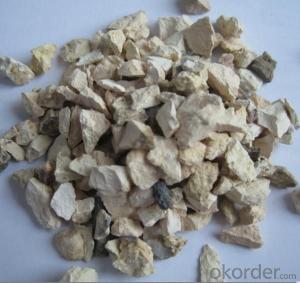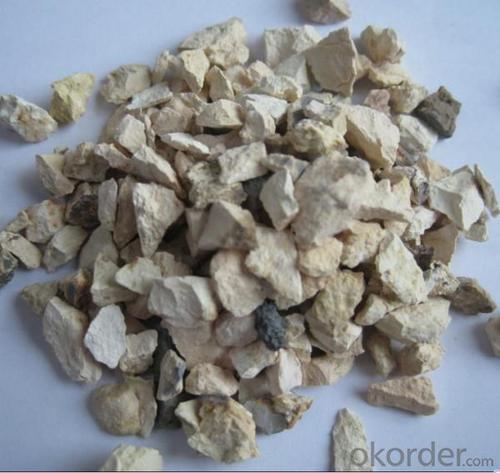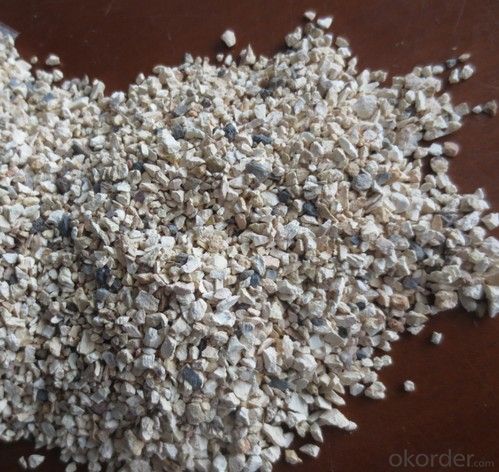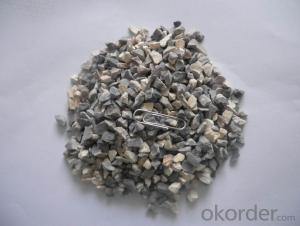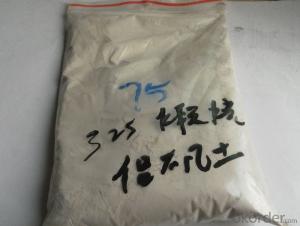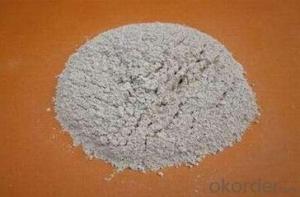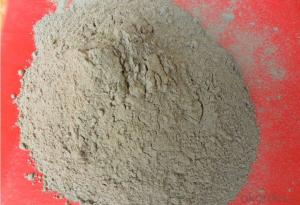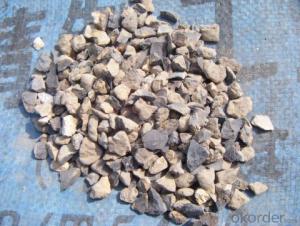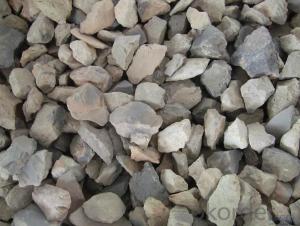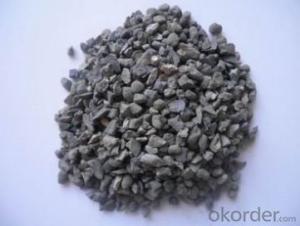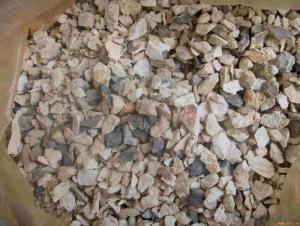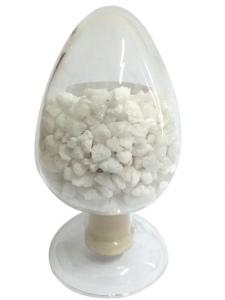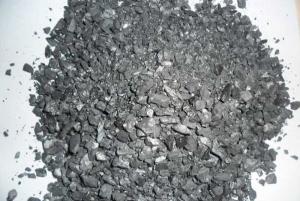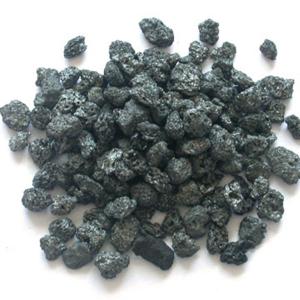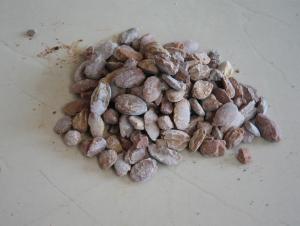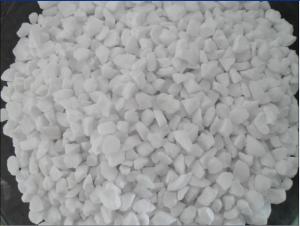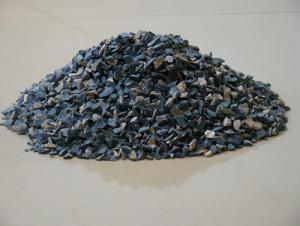Raw Materials for Refractory:China Supplier 85% Calcined Bauxite Price
- Loading Port:
- China main port
- Payment Terms:
- TT OR LC
- Min Order Qty:
- 25 m.t.
- Supply Capability:
- 20000 m.t./month
OKorder Service Pledge
OKorder Financial Service
You Might Also Like
Packaging & Delivery
| Packaging Details: | packed in 25kg or 50kg bags with water proof and seaworthy packing |
| Delivery Detail: | Shipped in 3 days after payment |
High alumina bauxite or fine dust are made of high quality aluminum bauxite after firing in high temperature., High alumina bauxite or fine dust can made kinds of shaped or unshaped refractory materials with aluminate bauxite as the binder.
Application: widely used in metallurgy, petrochemical industry, hydroelectric, mechanical, buliding industrial department, used as lining of kinds of industry furance.
index
items | Chemical composition % | Water absorption % | Bulkdensity g/cm3 | |||
Al2O3 | Fe2O3 | CaO+MgO | R2O | |||
Special grade ONE | ≥85 | ≤1.8 | ≤0.4 | ≤0.4 | ≤3 | ≥3.10 |
Special grade TWO | ≥80 | ≤2.0 | ≤0.5 | ≤0.5 | ≤5 | ≥2.90 |
Grade ONE | 70-80 | ≤2.0 | ≤0.6 | ≤0.6 | ≤5 | ≥2.75 |
Grade TWO | 60-70 | ≤2.0 | ≤0.6 | ≤0.6 | ≤6 | ≥2.65 |
Particle size
name | Particle size | limit |
High alumina bauxite | 10~5mm | >10,<5 less than 10% |
High alumina bauxite | 5~3mm | >5,<3 less than 10% |
High alumina bauxite | 3~1mm | >3,<1 less than 10% |
High alumina bauxite | 1~0mm | <1 less than 10% |
High alumina fine dust | 0.08mm | Screen residue less than 10% |
High alumina fine dust | 0.045mm | Screen residue less than 10% |
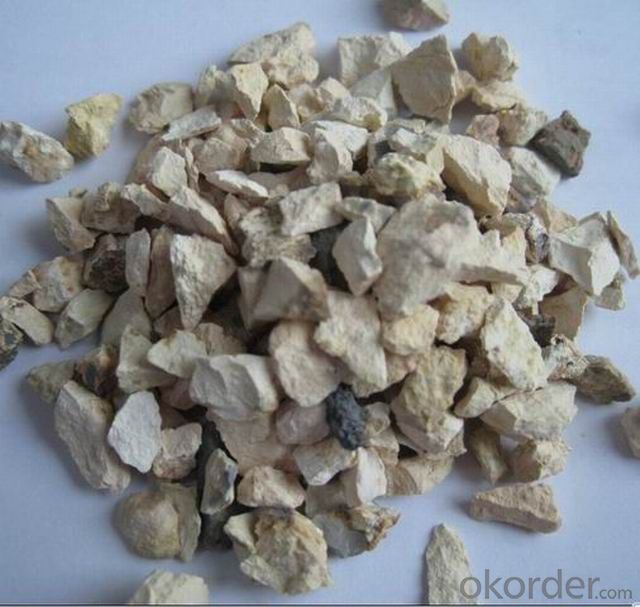
- Q: What is streaming fireproof material?
- Since streaming fireproof material has less surface energy, so when it is placed in a location to be used, it can be automatically filled so long as mixed with water at proper ratio. And then using vibrator or vibrostand and other tools to compact the mixture so as to satisfy the use requirements. Therefore, it does not require vibration, and it has less friction force between the particles. Generally hydraulic refractory castable must be mixed with water at proper ratio when in construction . While, the concept of "streaming" is in terms of refractory castable.
- Q: How is grade of fire endurance divided?
- You can search the answer on the Internet, thank you!
- Q: Development trend of refractories
- Mullite Matrix clinker. There are higher requirements of kaolin and refractory annded life, it should be able to grind medical industrial raw materials alumina, vacuum extrusion molding, high temperature roasting and smelting from unshaped refractory material a good thermal mechanical properties in the kiln and has good application prospect; 2, Dong Qingshi clinker. With kaolin and magnesia as raw materials, wet grinding, vacuum extrusion, and then high temperature calcination, furniture has a very good prospect; 3, magnesium calcium sand. Because of the development of clean steel, low carbon steel, high oxygen steel and stainless steel, the basic importance of free calcium oxide refractories is supported; 4, fused eutectic composite. Bauxite based fused corundum, bauxite based fused mullite, bauxite based fused mullite zirconia, fused corundum zirconia fused zirconia, Magnesium Oxide and other materials have been developing rapidly; 5, high density spherical hollow mullite aggregate. The wall thickness of the shell of the 0.2 - 1.5 - 5 mm, diameter 40 mm, smooth surface, can not be uniform, spherical shell, this may be a double, a prominent part of the surface can be dense, can also be used for hollow casting material, not only can improve the insulation performance of the material, in order to reduce the volume density. Instead of destroying its strength.
- Q: What are the new refractories? What are the features? How about their application and development?
- In metallurgy, in what position should it be used, in order to make the best. Answers are as following. In iron, steelmaking or converter. When questioning, pay attention to the ways. Answers: Try to use synthetic refractory materials.
- Q: What a blast furnace refractories generally?
- refractories for blast furnace include carbon brick and silicon-aluminum refractory. BF carbon brick inlcudes half-carbon charcoal bricks, microporous charcoal brick, ultra porous charcoal bricks, graphitic brick and mould pressing charcoal brick. tiles and molded graphite small charcoal bricks. I hope my answers above are helpful to you and your ideal anwers.
- Q: What is the use of refractory?
- Refractories mainly provide stable working environment for high temperature operation , such as metallurgical industry (steel ladle, hot-metal bottle, torpedo car and most places directly in contact with molten steel and iron), chemical industry (coke oven cokeing, dry quenching engineering) and building materials industry (lime kiln and glass kiln)
- Q: What are the main components of refractory cement?
- Refractory cement, also known as aluminate cement, can also be gray. Aluminate cement is often yellow or brown. Aluminate cement takes bauxite and limestone as raw materials, alumina content of about 50% as the clinker. And it is a hydraulic cementing material made by grinding. The main mineral of aluminate cement is mono calcium aluminate (CaO · Al2O3, abbreviated CA) and other aluminates, and a small amount of dicalcium silicate (2CaO · SiO2), etc.
- Q: What is the acceptance standard of refractory?
- It depends on the variety of materials. In general the main test items include chemical composition, refractoriness, refractoriness under load, creep, volume density, linear change, strength, slag resistance, thermal conductivity and thermal expansion. If it is shaped products, it is required to inspect the size deviation and whether it has edge. Detection method accords with the relevant national standards and there are lots of them. You can refer to the standard compilation.
- Q: What can red stone refractory do?
- In severe cases, the resistance to high temperature without softening down the Celsius temperature. Refractory materials are widely used in metallurgy, chemical, petroleum, machinery manufacturing, silicate, power and other industrial fields, the largest amount of metallurgical industry, accounting for 50% ~ 60% of the total output. Chinese use less impurity clay in more than 4000 years ago, firing pottery, and have been able to cast bronze. In the Eastern Han Dynasty (AD 25 ~ 220) have been used to make clay refractory kiln firing porcelain material and sagger. At the beginning of twentieth Century, the development of refractories to high purity, high density and ultra high temperature products, while developing completely without firing, small consumption of unshaped refractory materials and high refractory fiber (160 for industrial furnace refractories above 0 DEG C). The former, such as alumina refractory concrete, is often used in large chemical plants, ammonia synthesis plant, two - stage reformer furnace wall, the effect is good. Since 50s, the rapid development of atomic energy and space technology, the development of new energy technology, requires the use of special refractory material of high temperature resistance, corrosion resistance, thermal shock resistance, erosion has excellent properties, such as melting point above 2000 DEG C, oxide refractory compounds and high temperature composite refractory materials.
- Q: What is the mechanism of the errosion of the iron to the refractories?
- For example, the effect of the iron oxide: Mo corundum given temperature Fe2O3 solid solubility limit of the solid solution formed of corundum stone high solubility than the solid solution Mo Mo corundum lattice shape so Fe2O3Al2O3-SiO2-based material starts melting temperature of the system or the content of Al2O3 and Al2O3 / SiO2 ratio off Al2O3 / SiO2 & lt; 2.55 starting melting temperature of 1380 ℃ when Al2O3 / SiO2 & gt; 2.55 start melting temperature is increased 1460 ℃ and with its Al2O3 content increased gradually to increase the original atmosphere Fe2O3 original FeO off the solvent into the glass phase and the system starts melting temperature drops do not fall to 1240 ℃ 1380 ℃. Lower the melting point, increase the erosion, and reduce the life span.
Send your message to us
Raw Materials for Refractory:China Supplier 85% Calcined Bauxite Price
- Loading Port:
- China main port
- Payment Terms:
- TT OR LC
- Min Order Qty:
- 25 m.t.
- Supply Capability:
- 20000 m.t./month
OKorder Service Pledge
OKorder Financial Service
Similar products
Hot products
Hot Searches
Related keywords
